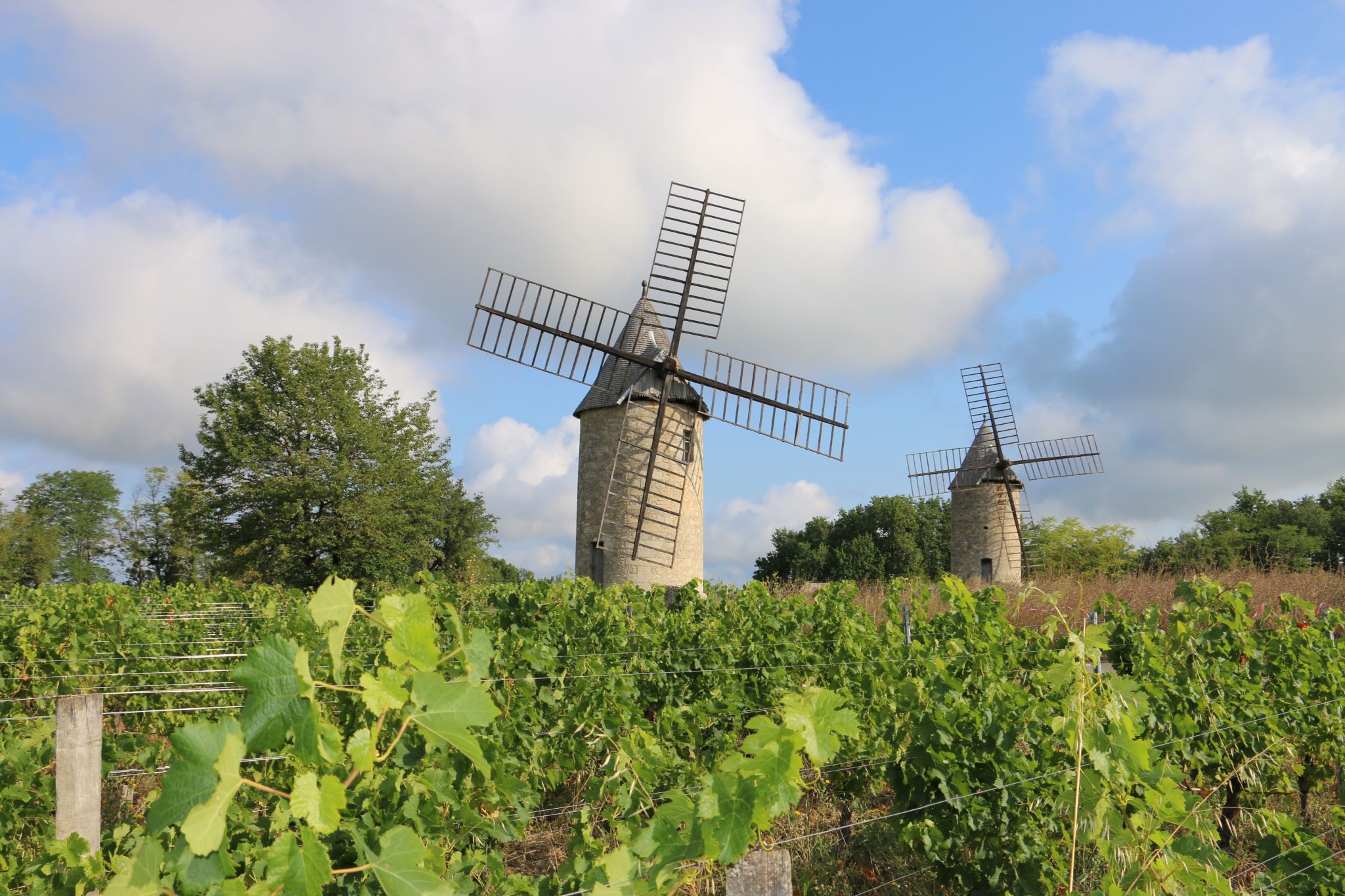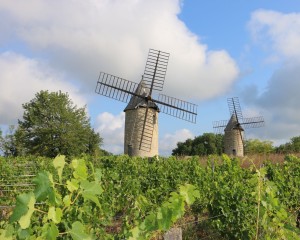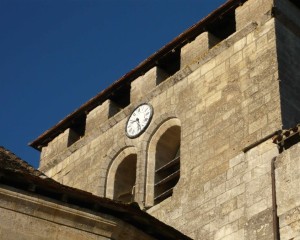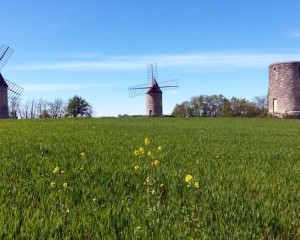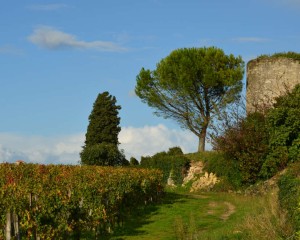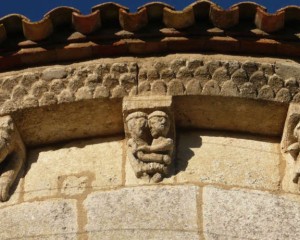Montagne is a town of the Great Saint-Emilion Area and part of the Canton of North Libourne. The village is 97 meters above sea level and is located 6km from Saint-Emilion. Its area is 2,670 ha. Today, the town has 1,542 inhabitants called the Montagnais and the Montagnaises.
The name derives from the Latin "montis" (hill), but also "Montane" low Latin, and finally "Montagne" in Gascon.
It seems that Montagne has been inhabited since Neolithic times, the village has preserved testimonials of this activity on the site of Malengin. Objects from the Copper Age and the Bronze Age have been found there. There are also a few villas of the Gallo-Roman era: the remains of the villa of Ausone, the villa Lucaniacus but also sarcophagi and mosaics.
At the fall of the Roman Empire, the region was placed under the supervision of Christian bishops.
In the 11th and 12th centuries, religious life in Montagne was very active, with the construction of three churches.
In the Middle Ages activities such as the exploitation of limestone quarries began. Montagne was part of the Puynormand castellany and remained so until 1602 when Henry IV sold the lands he owned. Purchasers were committed to the prosperity of their lands by notably developing the viticulture. They enjoy the protection of the king for the promotion of their products and therefore their wines quickly became a huge success that has carried on into the modern day.
In 1973 the mayor and his council voted for the replenishment of the town by bringing together the three neighboring parishes: Montagne, Parsac and Saint-Georges, whose main source of income is wine making.
The town is crossed by a small stream, the Barbanne. the name means boundar, with the pays d'oc on the Saint-Emilion side and oil on the Montagne side.
Attached to Saint-Emilion, the town of Montagne is marked by vineyards and produces high quality wines. Montagne today produces famous wines of the Montagne-Saint-Emilion appellation ; and is part of the Saint-Emilion satellites appellations.
Saint Martin church, built in the 12th century, it has undergone many restorations over the centuries. It has a bell tower consisting of square towers at the intersection of the transepts and the nave. On the west side, there is a door with seven arches and capitals evoking fantastic heads. Overall, the tower, transepts and apses, have a harmonious balance. Inside, there is a beautiful cupola of the 12th century, unique to the Libourne area; which is a truly a sign of the beginning of Gothic vaults on intersecting ribs.
Saint Georges Church located in Saint Georges (a hamlet 850 meters from Montagne), it boasts an exceptional three-storey tower. It stands above the village and vineyards. The church dates from the 11th century and was built on the site of ancient Roman ruins. It is certainly the oldest of the castleny of Puynormand. Its bell tower is original, narrower at the base than at the top and stands at a height of 23 meters.
Notre Dame de Parsac is the smallest church of the town of Montagne. It was built by the British after 1450, following a dilapidated church. Many restorations were then succeeded over the centuries, including one in 1992 to prevent the collapse of the building.
Chateau of Towers was built in the 14th century and has two polygonal keeps with two circular towers. Outside the castle there is a chapel
Château Saint-Georges built well before the 17th century, it was sold in 1602 by Henri IV during the dismantling of the castleny of Puynormand. Built in a U-shape, the ancient castle and its four towers were designed by the architect Victor Louis.
Underground shelters of the 6th century in the locality of Malengin in Parsac discovered by Mr. Millangue who also discovered a limestone quarry for grinders whose exploitation dates back to the 11th century.
Remains of windmills of Calon (17th century) on the mound of Calon, two of them were rehabilitated. The mills were in operation until 1930.
The hiking loop of the Bois de Bonde of 4 km, is an interpretive trail through the vineyard landscape.
Five bike routes, from Montagne, are proposed by the Tourist Office of the Greater Saint Emilion Area. You can find the routes here.
Le Bourg – BP 6
33570 MONTAGNE
05 57 55 21 00
accueil.courrier@mairie-montagne.com
OPENING DAYS OF THE CITY HALL
Monday, Tuesday and Thursday: 8:30 a.m. to 12:15 p.m. and 1:45 p.m. to 5:30 p.m.
Wednesday: 1:45 p.m. to 5:30 p.m. (every month, closed last Wednesday all day)
Friday: 8:30 a.m. to 12:15 p.m. to 1:45 p.m. / 5:00 p.m.
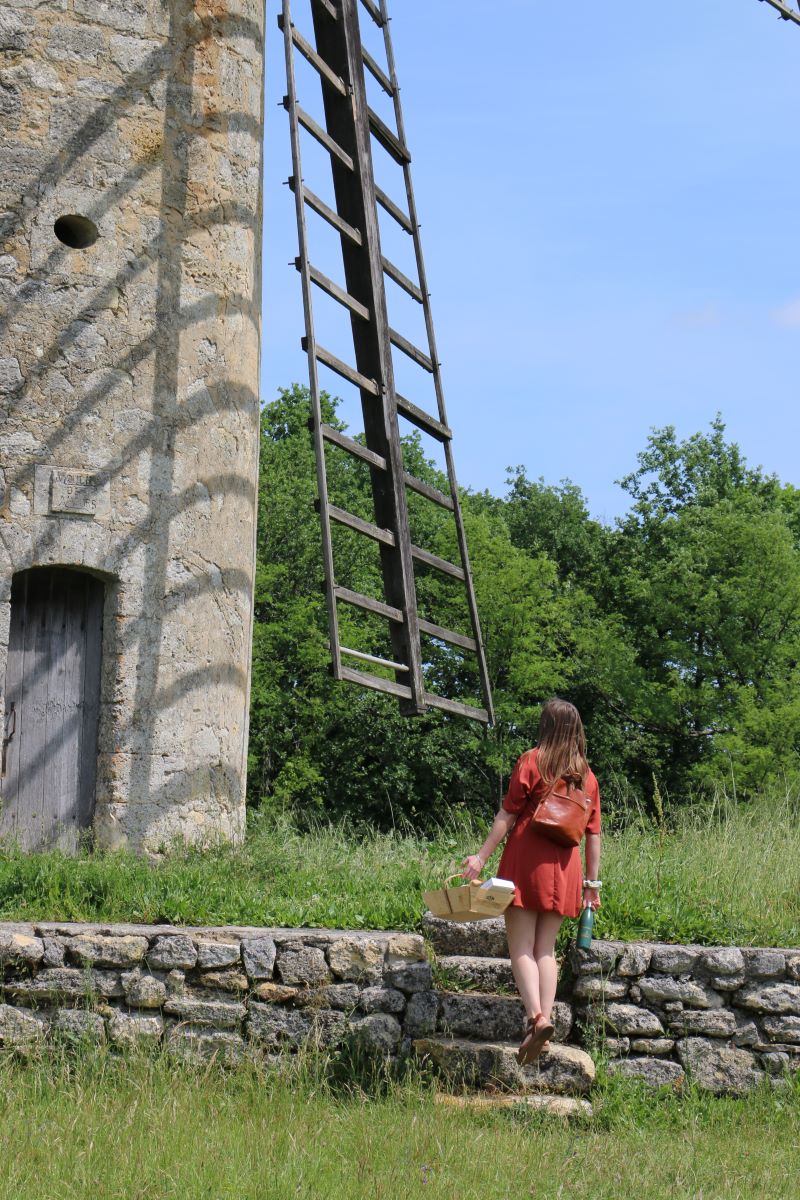
Grand Staint-Emilionnais Tourist Office
Le Doyenné - Place des Créneaux
33330 SAINT-EMILION
